Arsenal’s victory over Reading on Sunday evening was, largely, a game won in the wide areas- as it often is under Jonas Eidevall. Lots of low block teams try to force superior teams into wide areas to limit their effectiveness but Eidevall’s strategy essentially welcomes this. As it was with Aston Villa in December Eidevall opted to play Caitlin Foord and Katie McCabe on their natural sides.
When I asked Eidevall about this in the aftermath of that Villa game, he explained, “We knew width was going to be an important component, especially in the final third. That means that the way we positioned, sometimes we keep our full-backs a little higher, in this game we felt there was a lot of opportunity to keep the wide forwards higher. Because of the situations we anticipated going into we thought that was going to be favourable to expose them.”
On Sunday evening, I asked Eidevall whether the idea was similar against Reading, “It was the same idea as Aston Villa and West Ham away. That time we were not successful enough at converting those goal scoring opportunities but today we were.” However, in this piece, that is not what I am going to focus on.
Leah Williamson won the Sky Sports and the Arsenal Women’s Supporters’ Club Player of the Match for her performance in midfield. I also asked Jonas Eidevall about her performance post-match, “Definitely her best match I have seen her play in midfield. Sometimes I feel like you don’t get her facing forward enough in midfield. Today we got her facing forward but in more advanced positions. How today played out was probably the optimum scenario for having Leah as a central midfielder because you get one of the best passers in the world but you get it 15 metres higher up than you do as a central defender and she can break lines and engage in the final third.”
So let’s look at Williamson’s performance in greater detail. The way I phrased the question to Jonas was that, often when Leah plays in midfield, we still get Leah the centre-half, whereas on this occasion, we got a midfielder. Williamson played in midfield in the 0-0 away draw at West Ham, when the Gunners had, by Eidevall’s admission, a very similar game plan. Here is the pass network for that game (courtesy of Statsbomb).
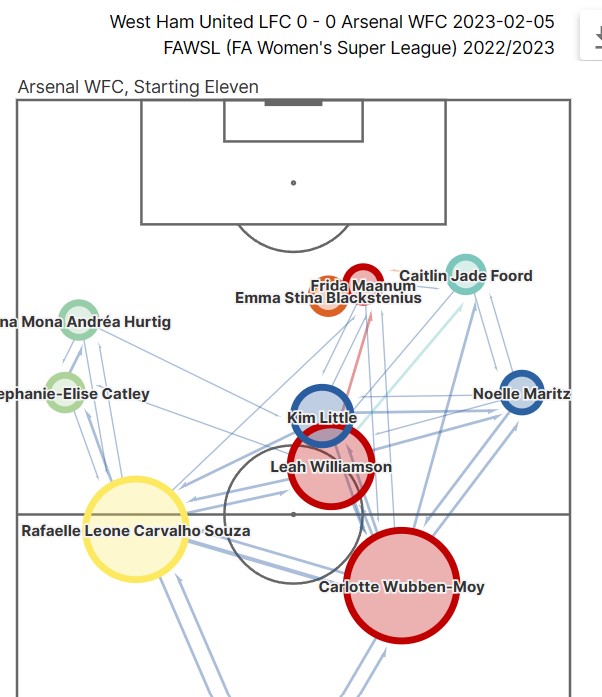
In the absence of Lia Wälti, the spacing in midfield is not as good here. Little and Williamson both prefer the right side and Wälti was not available to connect the left side. It meant that Williamson was a little crowded on the day and with the gaps on the left side, it was more difficult for her to access her radar of cross-field passes. Compare to the Statsbomb pass network from Sunday against Reading.
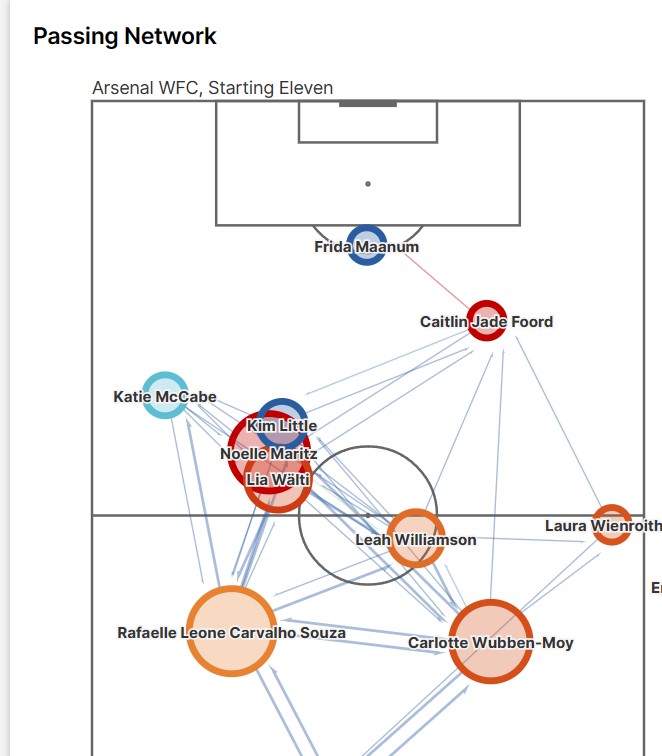
We see Maritz invering into midfield, while Wälti and Little are over on the left side and McCabe is staying very wide. It gave Williamson space in which to operate.

This is the first time that Williamson receives the ball from the defence in the game. Note Eidevall’s comment to me from post-match, “Sometimes I feel like you don’t get her facing forward enough in midfield.” Here she is facing Rafaelle, which is totally natural.


She turns on her left side and immediately punches the ball through the lines for Maanum, who in turn touches the ball to Kim Little and Arsenal are in a promising situation and it happens within a second or two of Williamson receiving the ball from a centre-half facing her own goal.

Here, McCabe is well tracked by Gemma Bryson and needs an exit. You can see that Williamson, in the centre circle, has recognised this and drops to give McCabe an option.

McCabe plays a brilliant disguised pass in-field.


Williamson receives the ball and instantly spreads it to Foord on the right and Arsenal keep Reading under pressure, ending in a Maanum shot on target.

There is not a great deal tactically to pull apart in this example, it’s just another example of Williamson’s passing higher up the pitch. Wälti moves the ball to Williamson from the left.

Williamson again turns and scans the scene quickly.

And she plays a brilliant through-ball to Noelle Maritz in a dangerous position.

There was greater attacking intent from Williamson than many of her previous appearances in midfield too. Here Wälti plays a brilliant cross-field pass to Foord and we can see Williamson in the centre circle.

As soon as Wälti’s pass starts to travel, so does Williamson, sprinting forwards in support of the attack. The ball doesn’t come to Williamson during this move but her intent to support the attack was notable and paid off later in the game.

Once again, Wälti on the left, looks for her midfield partner Williamson to the right.

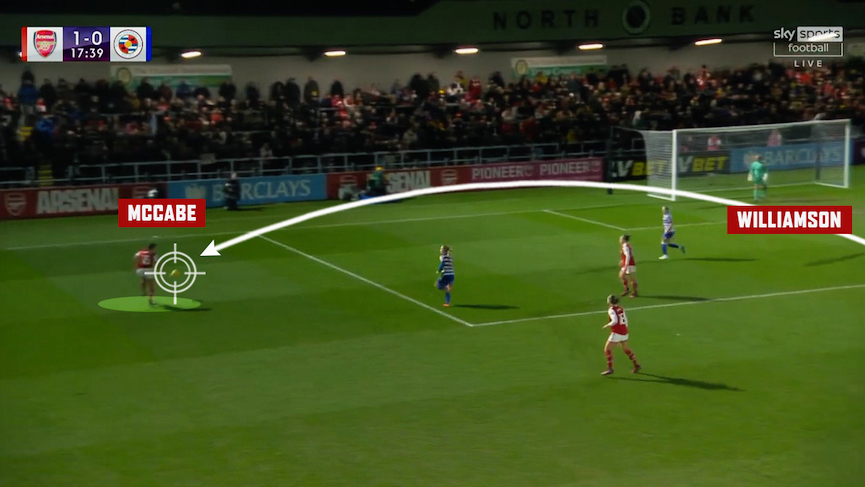
And once again, Williamson’s pass selection in a crowded final third is excellent, she finds McCabe in space and Arsenal threaten the Reading goal from this move.
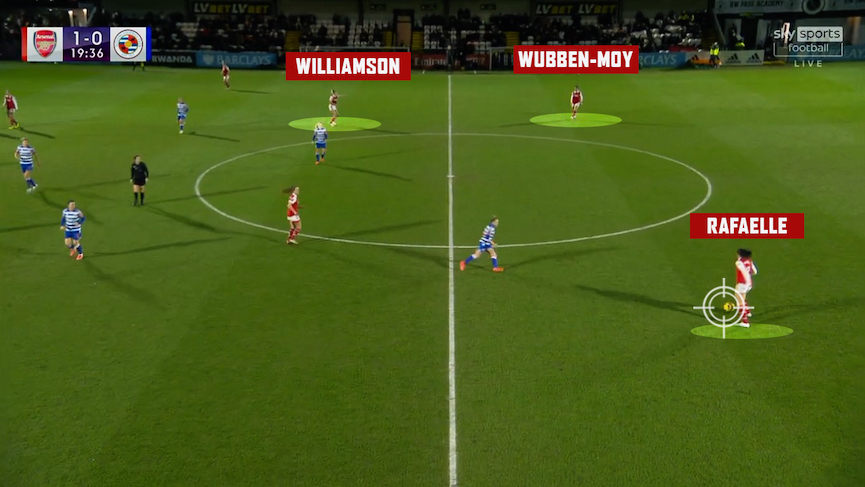
As Arsenal pass out from the back here and the ball moves to Rafaelle on the left, the Reading team has shifted over to that side, which Williamson immediately spots. She motions for Wubben-Moy to stay central so that Williamson can pull over to the right side where space has opened up.
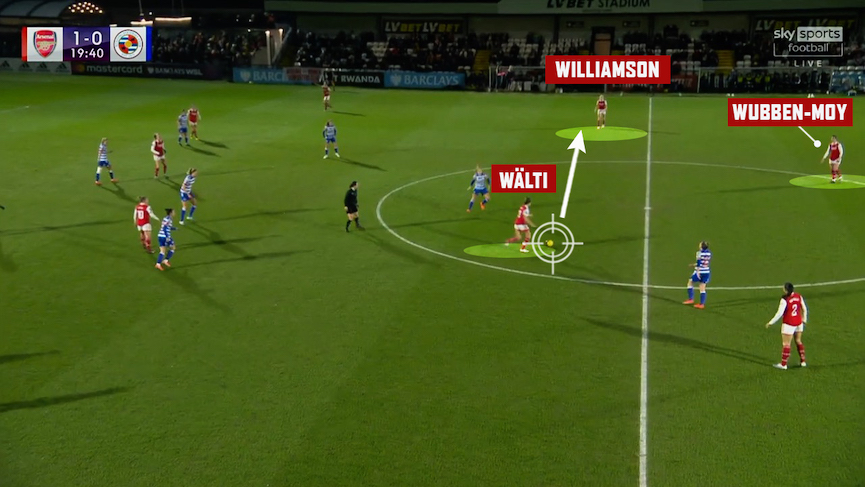
Now as the move unfolds, Williamson has given herself time and space to pick a pass by stepping away from the crowd scene.

This gives Williamson time and space to move forwards and she punches the ball between the lines to Caitlin Foord.

And once again, Arsenal are in a threatening situation with Foord shooting over the bar.

Once again, we see here Williamson’s willingness to support the attack. She scored a goal for England in the most recent international break in similar circumstances. Maritz powers down the left and puts in a cross.
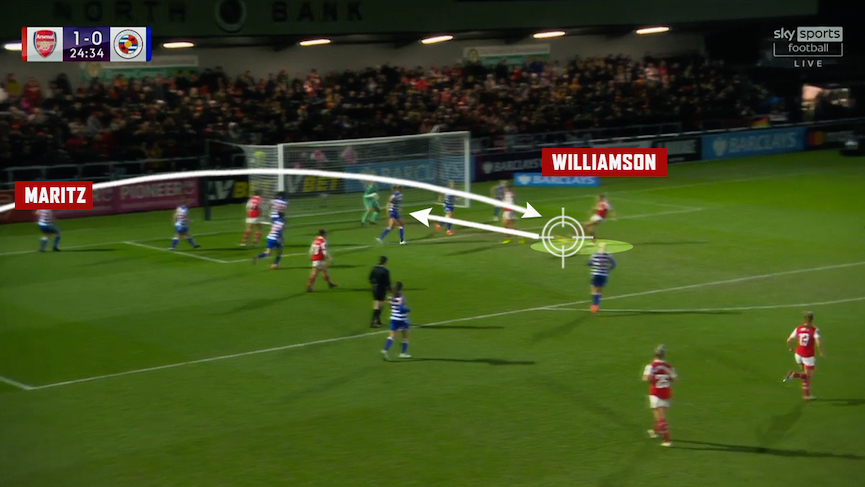
Williamson meets Maritz’s cross but Grace Moloney saves.
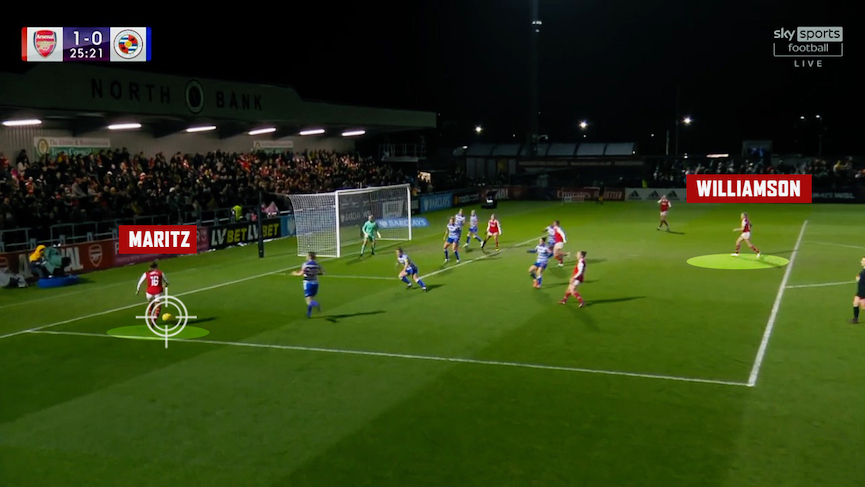
From this angle we see that Williamson just has the intelligence to hold her run and, again, stay away from the crowd scene.
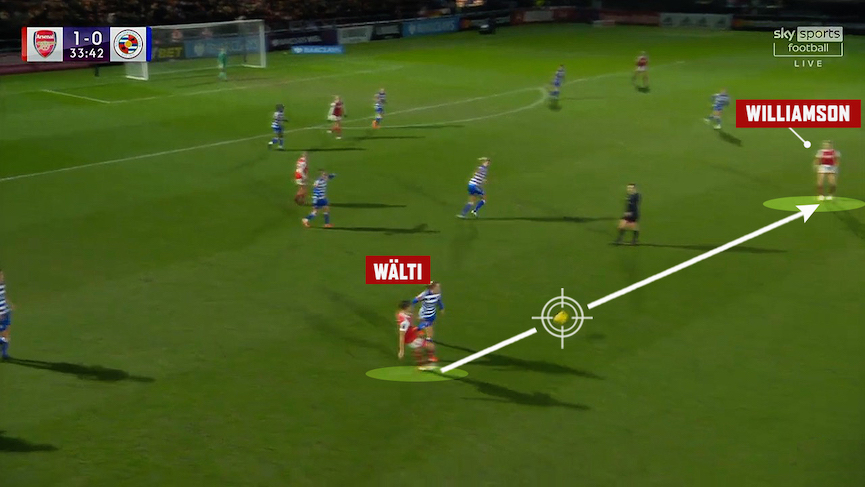
Once again, here Williamson benefits from the clustering on the left side and Wälti finds her in a familiar position.
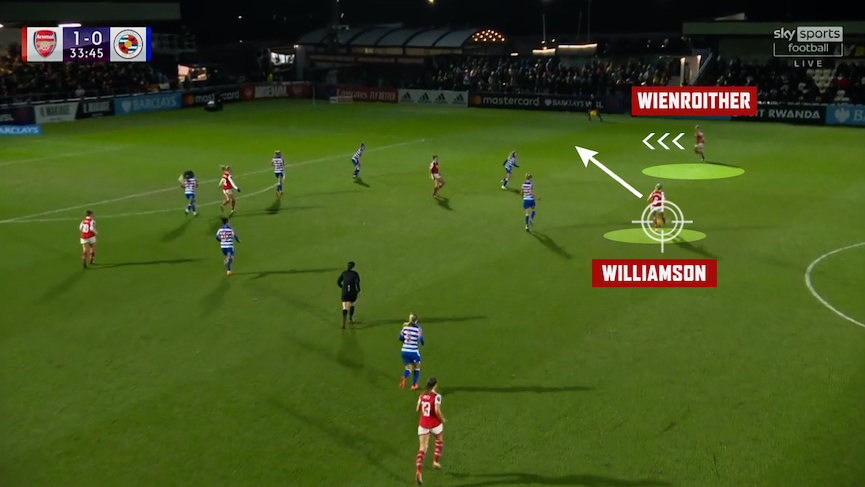
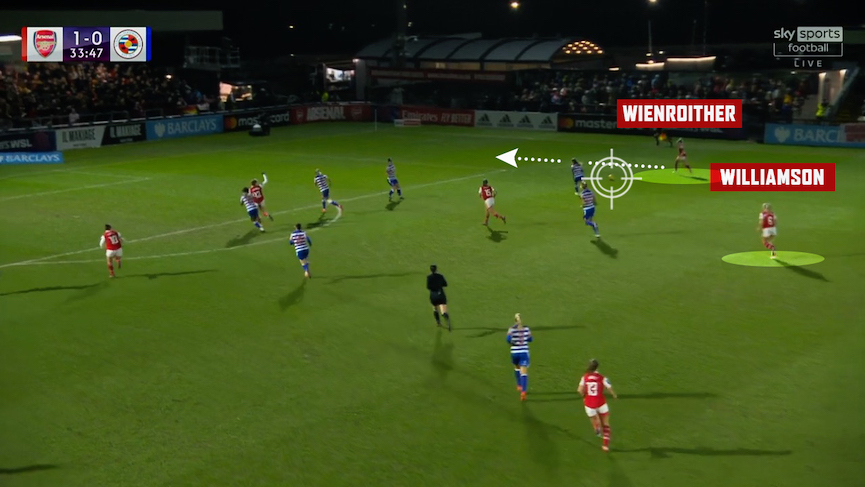
This is a relatively simple pass under little pressure but one of the elements that makes Williamson such a great passer is that she passes with a message on the ball. She angles this pass so that it runs ahead of Wienroither and into her running stride.
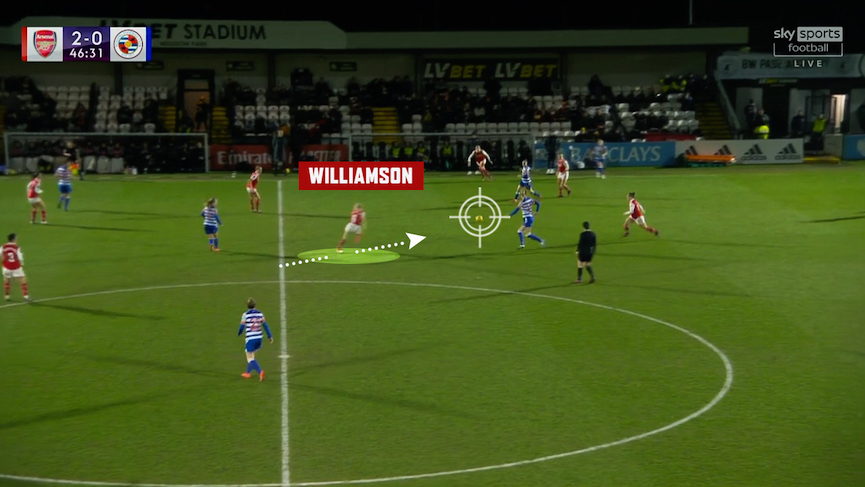
Williamson creates the third goal with this interception in midfield as Reading pass out from the back.

From here, she drives forward into the space and Reading are in trouble.
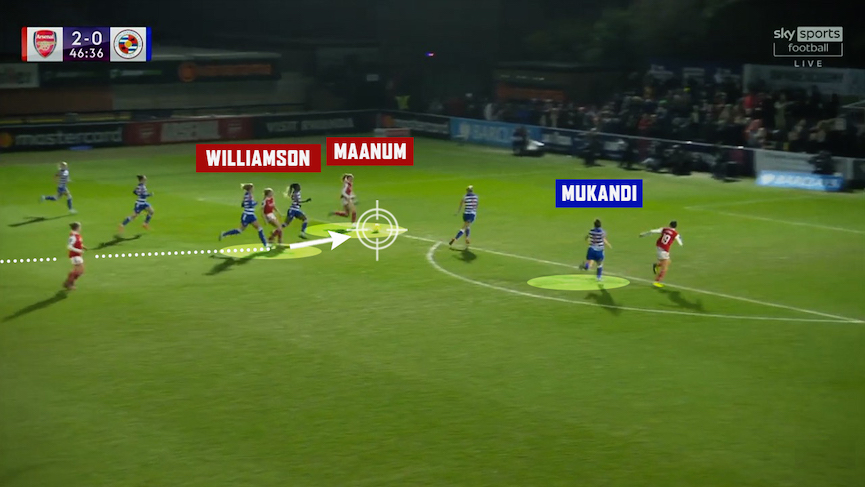
Williamson finds the pass to Maanum and Emma Mukandi diverts the ball into her own net from the cut back.
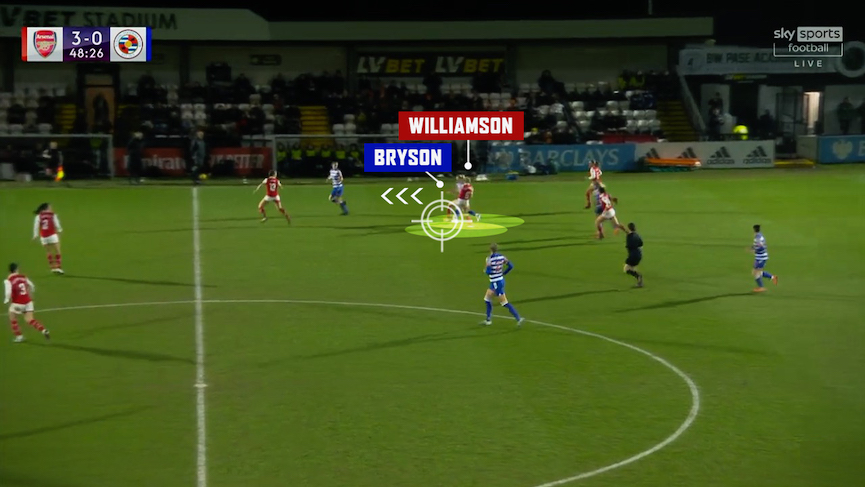
This was the contribution that drew the most audible praise from Eidevall. An Arsenal attack breaks down on the left side and Reading look to break.

Williamson fights with everything she has to win the ball back.
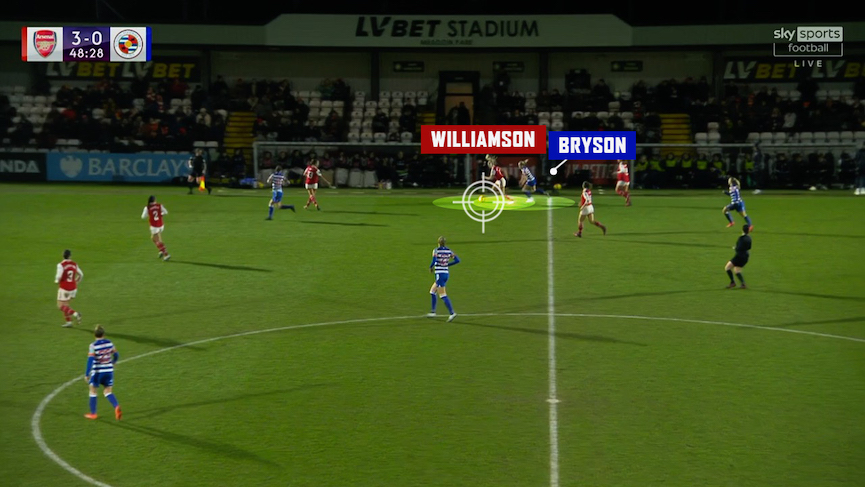
She wins it back and you can see Eidevall thumping his hands together enthusiastically (I heard him and I was on the other side of the stadium). One of the coach’s key principles is “100% effort no matter what.” Having just gone 3-0 up, seeing one of his leading players putting this much effort into a ball recovery really pleased the coach.
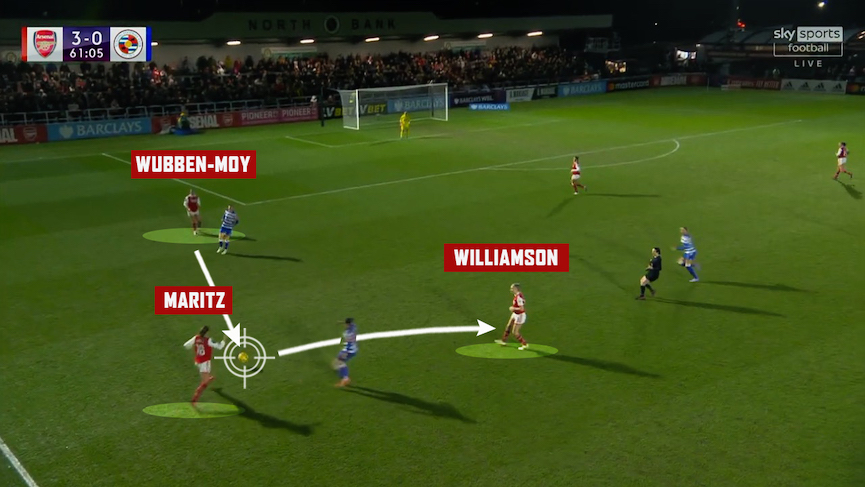
In this example, Williamson is slightly deeper and illustrates how quickly she can turn defence into attack. Wubben-Moy clears to Maritz, who touches the ball to Williamson under duress.
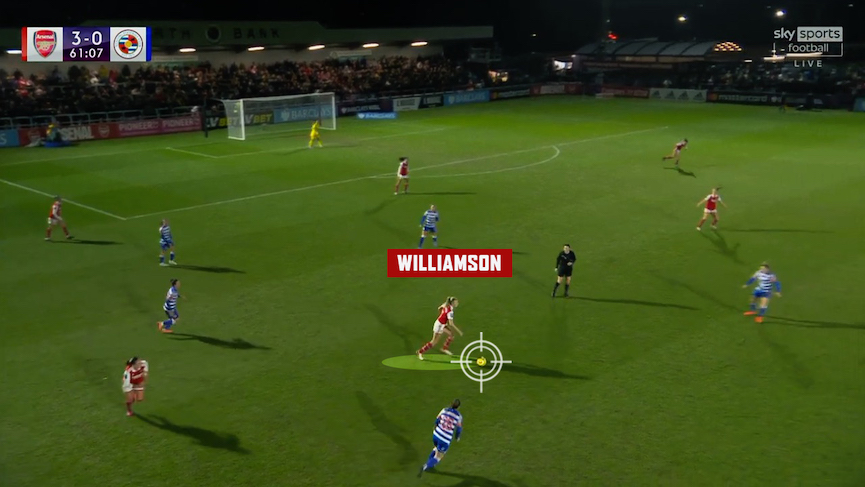
She turns on the ball quickly and is already scanning what is ahead of her.


And her ball into the right channel puts Blackstenius into a very dangerous position that results in another shot on target.
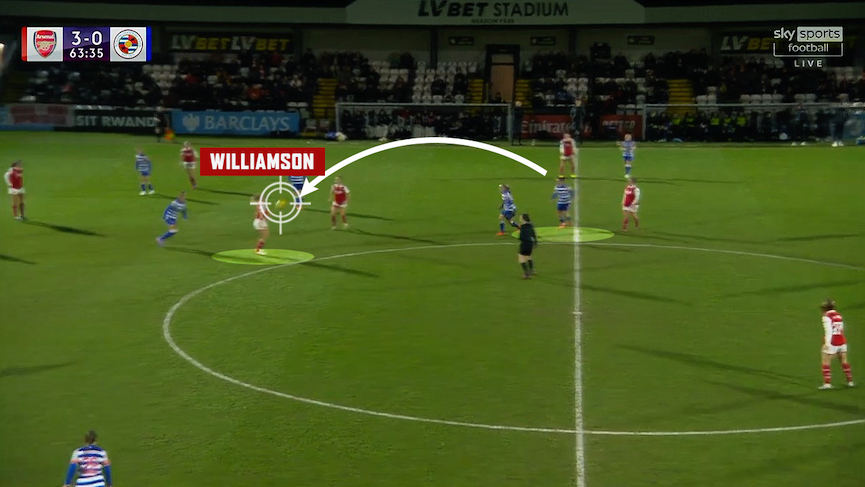
Here she picks up a loose Reading header in midfield. The speed of Williamson’s actions on the night were very noticeable too.

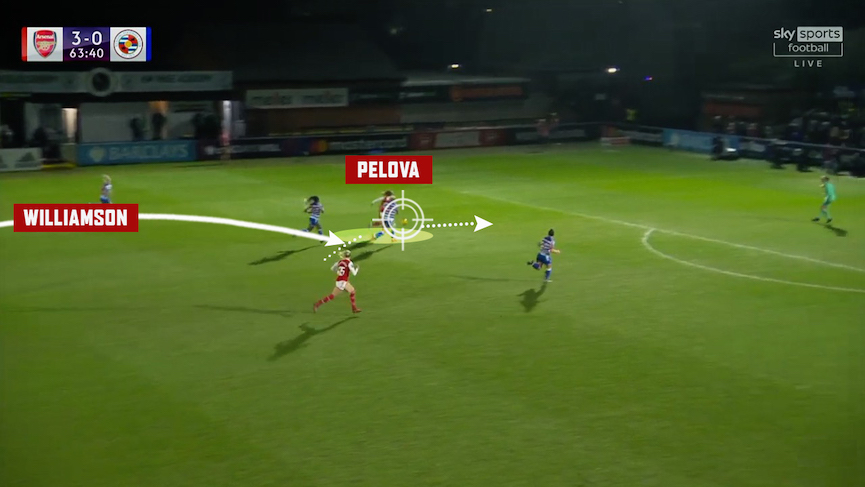
Williamson chests the ball down and releases a pass in behind immediately which Pelova happily accepts. This move also ends in a shot on target.

By now, the lead broadcaster has recognised her influence on the game and produces a complementary graphic.
Getting on the scoresheet and picking up the @BarclaysFooty Player of the Match!@leahcwilliamson was on fire for @ArsenalWFC last night 🔥#BarclaysWSL pic.twitter.com/smMSlKg92Q
— Barclays Women's Super League (@BarclaysWSL) March 13, 2023
In the end, Williamson gets the goal her performance deserves before being substituted to rapturous applause. This was an exemplary midfield display from Arsenal’s number six.





Superb. Kim-Lia-Leah midfield operating in a different way to what you would expect. Playing with two ball-winners freed Williamson to play to her strengths as a playmaker. (Yet more proof that Wälti is an absolutely pivotal player for us.) I was struggling to articulate to myself what the difference was this time with Leah Williamson in midfield and why it was working so well. I think Sarina Wiegman would have found that display very interesting.
Sarina certainly watching in the stands.
I think it allows Kim to push further up, which we dont see as much of these days as she is busy tidying things up at the back.
What is pleasing is that there is more movement off the ball. I felt we were previously quite static and slow in the passing.
I reckon that while Wiegman would have appreciated the performance – it pretty much confirms she has solid back up to Keira Walsh – she’d be more frustrated that she’s not seeing performances like that from the other midfielders vying to get in to the World Cup squad.
Great stuff as always Tim. Have you any idea if and when the mobile app is going to be updated? It’s been years now since it was updated which is a pity. It’s a lot more functional for someone on the go where mobile data comes and goes.
Hi, there is an app upgrade in the pipeline, but until then, the mobile site is optimised for your phone and functions better than the app.
You can add a bookmark to your home screen and use if that way.
in that pass to Maritz into the box, Maritz should have test Moloney, she played very good indeed, I heard she played that position for Wolfsburg before Arsenal, just need get confidence to shot at goal.